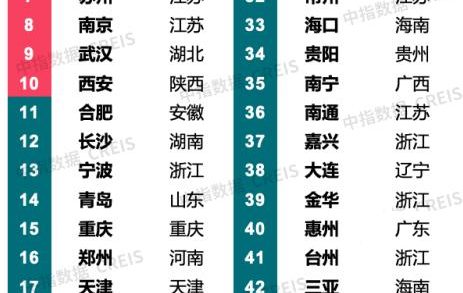Positive Comments: Capital Entry Accelerates the Streamlining of the Funeral Industry and Promotes the Innovation and Upgrade of Service Models
The funeral industry has long been regarded as a “traditionally conservative” field, and its service models have often been difficult to break through due to cultural inertia, religious influence, and information asymmetry. The rise of Pure Cremation and its acquisition by Cinven precisely demonstrate the activating value of capital in this “slow – paced industry.” Its positive significance is mainly reflected in the following three aspects:
First, Pure Cremation’s “minimalist cremation” model precisely hits the pain points of consumer demand, and the intervention of capital will accelerate the popularization of this model. Traditional funeral services (such as the mainstream religious ceremonies, luxury coffins, and high – priced cemeteries in Europe and the United States) are getting further and further away from the contemporary young people’s view of death, which emphasizes “light ceremonies and heavy emotions,” due to their cumbersome processes and high costs. Through the “full – process self – service cremation” (door – to – door pick – up, all – inclusive pricing, and no additional fees) and pre – sale services, Pure Cremation has compressed the funeral cost from thousands of pounds to a more affordable level. At the same time, it provides personalized alternative options such as “beach barbecue memorials” and “bar gathering tributes,” which essentially transform the “death service” from “ritual consumption” to “emotional companionship.” This innovation not only meets the market’s demand for “saving money” but also responds to the generational change in concepts. According to a 2021 survey by Sky News in the UK, 60% of respondents said they “hoped the funeral form would be closer to their pre – death lifestyle.” As a PE giant with a management scale of over 100 billion euros, Cinven’s resources (such as the synergy of the medical and elderly – care industrial chains) and financial strength (the size of its thirteenth – phase fund is 13.2 billion euros) will help Pure Cremation expand its service network, optimize its cost structure, and even replicate the model in other European countries, promoting the entire funeral industry to transform towards “streamlining.”
Second, the intervention of capital helps to improve the standardization and transparency of funeral services and reduce industry chaos. For a long time, the funeral industry has often been criticized as a “profitable field” due to its characteristics of information opacity and consumers’ “passive acceptance.” Taking the United States as an example, statistics from the NFDA in 2021 showed that the average cost of a funeral with a coffin was as high as $9,420 (about 67,000 yuan), of which the additional fees for cemetery use and tombstones accounted for over 40%, and the pricing differences among different service providers were extremely large. Pure Cremation’s “all – inclusive pricing” model itself is a subversion of the traditional “hidden fees,” and the intervention of PE capital will further promote the establishment of more standardized service standards (such as cremation processes and after – sales guarantees) and financial transparency (such as the disclosure of cost composition). Cinven’s medical and insurance enterprises (such as Viridium Gruppe and Stada Arzneimittel) may also provide data – driven management tools for Pure Cremation. For example, they can optimize service packages through user demand analysis or develop “funeral savings plans” through insurance cooperation, allowing consumers to plan their post – death expenses more clearly.
Finally, this acquisition sends a positive signal that the funeral industry can be innovative, attracting more social resources to focus on the field of people’s livelihood and rigid needs. Funeral services are a typical “rigid demand.” Data from the UK National Statistics Office shows that the number of deaths in the UK in 2024 was about 650,000, and it continues to grow with the intensification of the aging population. However, for a long time, capital’s attention to the funeral industry has been concentrated on the “high – profit segments” (such as cemeteries and high – end ceremonies), while ignoring the market gap for “inclusive services.” The success of Pure Cremation (with a 100% annual increase in cremation volume from 2017 to 2021 and 65,000 annual pre – sale services) proves that innovation centered on “user needs” can also achieve commercial returns in the funeral field. Cinven’s acquisition further verifies the sustainability of this model. In the future, it may attract more entrepreneurs and capital to enter niche segments such as “minimalist funerals” and “green funerals” (such as ecological burials and tree burials), promoting the industry to shift from “making money from emotions” to “making money from services.”
Negative Comments: The Profit – Seeking Nature of Capital May Erode the “Money – Saving Original Intention,” and Industry Monopoly and Ethical Controversies Need to Be Watched Out For
Although the entry of capital has brought innovation impetus to the funeral industry, its potential risks also deserve attention. After Pure Cremation was acquired by a PE giant, it may face three major challenges: “dilution of the original intention,” “monopoly pricing,” and “commercialization of emotions.”
First, the short – term return pressure of PE capital may lead to an increase in service costs, deviating from the original “money – saving” intention. The core goal of PE funds is to achieve exit returns (such as through IPOs or secondary sales) through asset appreciation. Therefore, they often require the invested enterprises to achieve profit growth within 3 – 7 years. Pure Cremation’s previous “all – inclusive pricing” model relied on economies of scale (such as increasing cremation volume to spread fixed costs) and cost control (self – built crematoriums). However, after the acquisition by Cinven, if it compresses service costs to improve profit margins (such as reducing personalized options or lowering the maintenance standards of cremation equipment), or raises prices indirectly through “value – added services” (such as high – priced urns and memorial ceremonies), its “money – saving” label may fade. For example, in 2013, when the US funeral giant SCI (Service Corporation International) tried to monopolize the market, it was accused of pushing up prices through “bundled sales” (customers had to use its funeral services when buying a cemetery plot), and finally faced an antitrust investigation. If Pure Cremation turns to a similar model due to capital pressure, it may trigger a consumer trust crisis.
Second, capital concentration may intensify industry monopoly and weaken the vitality of market competition. The funeral industry has a strong regional attribute (consumers tend to choose local service providers). However, after leading enterprises integrate resources through mergers and acquisitions, they may form regional monopolies. For example, SCI has 1,449 funeral homes and 374 cemeteries in the United States, with a market share of over 20%. Its pricing power directly affects the industry average price. If Cinven successfully acquires Pure Cremation, with its financial strength and industrial chain resources (such as medical and elderly – care synergy), it may accelerate the mergers and acquisitions of other UK funeral service providers (similar to Duke Street’s acquisition of Funeral Partners during the same period), ultimately forming a market pattern dominated by giants. Once a monopoly is formed, consumers’ choice space will be compressed, and enterprises’ innovation motivation may also weaken. When the market share is large enough, enterprises tend to maintain the existing model rather than take risks in innovation.
Third, there is a natural conflict between the “emotional attribute” of funeral services and the “commercial logic” of capital, which may lead to ethical controversies. Funeral services are not only a service but also a carrier of the emotional connection between the living and the deceased. The initial success of Pure Cremation was largely due to its “de – commercialized” user perspective (such as supporting families to design memorial methods independently). However, after the intervention of capital, enterprises may pay more attention to the “user lifetime value” (such as the renewal rate of pre – sale services and the conversion rate of additional services) rather than the satisfaction of emotional needs. For example, if an enterprise over – promotes “high – end memorial packages” or “customized urns” to increase revenue, it may be criticized by the public for “profiting from death anxiety.” A 2023 survey by The Guardian in the UK showed that 58% of respondents had a negative attitude towards the “commercialization of funeral services,” believing that “death should not be an investment target.” This kind of public opinion pressure may affect the enterprise’s social image and even trigger policy supervision (such as price control and service content restrictions).
Suggestions for Entrepreneurs: Find a Balance Between Capital and Original Intention and Build Barriers Centered on User Needs
The case of Pure Cremation provides important inspiration for entrepreneurs in the funeral and other people’s livelihood service fields. The key lies in how to find a balance between the support of capital and the original intention of service, and at the same time build irreplaceable competitive barriers.
First, clarify the enterprise’s mission and avoid being “kidnapped” by the short – term goals of capital. Entrepreneurs need to clearly define the core values (such as Pure Cremation’s “simplifying funeral costs”) before introducing capital and set up “mission protection clauses” in the investment agreement (such as restricting excessive price increases and banning forced bundled sales). For example, they can require investors to sign a “user rights commitment” to ensure that service pricing is linked to costs, or establish an independent committee to supervise service standards. In addition, entrepreneurs need to maintain strategic control over the enterprise (such as through the AB share structure) to avoid deviating from the original intention due to capital pressure.
Second, build differentiated barriers based on “in – depth insight into user needs” rather than relying on capital scale. The success of Pure Cremation stems from its prediction of the trend of “popularizing funerals” rather than simply capital investment. Entrepreneurs should continuously capture demand changes through user research (such as interviews and questionnaires) and behavioral data analysis (such as the preference for pre – sale services). For example, they can develop innovative products such as “digital memorial services” (online memorial platforms) and “ecological burial packages” (cooperating with environmental protection organizations) to form a positive cycle of “service – demand.” This kind of barrier based on user stickiness can reduce the dependence on capital expansion and avoid falling into the trap of “the larger the scale, the higher the cost.”
Finally, actively embrace transparency and social responsibility to alleviate the public’s concerns about the “commercialization of death.” Funeral services involve sensitive emotions. Entrepreneurs need to convey the concept of “service comes before profit” by disclosing cost structures (such as itemized pricing for cremation, transportation, and venue), participating in public welfare (such as providing free or low – cost services for low – income groups), and establishing user supervision mechanisms (such as setting up a “service experience committee”). For example, Pure Cremation can regularly publish a “User Service White Paper” to disclose pricing logic and public welfare investment, enhancing public trust. This “social enterprise” attribute can not only attract capital that inisting its values (such as ESG funds) but also establish a unique brand advantage in industry competition.
In conclusion, the acquisition of Pure Cremation by a PE giant is a microcosm of the “collision between tradition and innovation” in the funeral industry. The intervention of capital may accelerate service upgrade, but it may also erode the original intention due to its profit – seeking nature. Entrepreneurs need to take user needs as the anchor point, find a balance between the support of capital and the adherence to the mission, and then can they embark on a sustainable innovation path in the field of people’s livelihood services.
- Startup Commentary”The Incomplete Evolution History of Bathing Centers”
- Startup Commentary”Starting from 358,800 yuan, Maserati Slashes Prices Drastically to Survive”
- Startup Commentary”Monopoly: Always the Best Business”
- Startup Commentary”A PE Giant Spent $6.6 Billion on a Crematorium”
- Startup Commentary”In a Low-Sports Year, Social Assets Still Hold Great Value”





